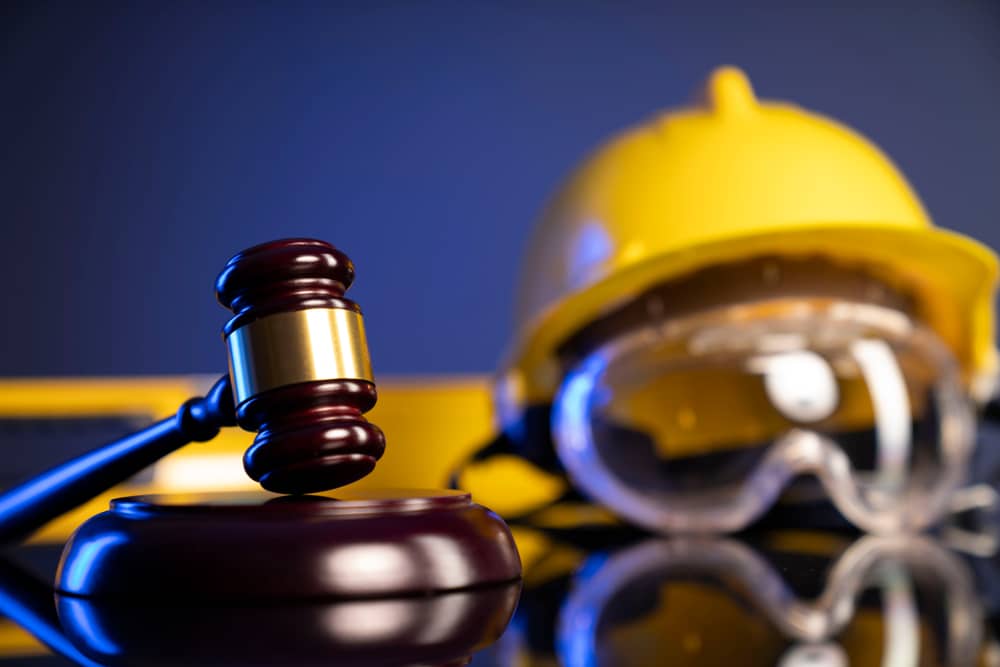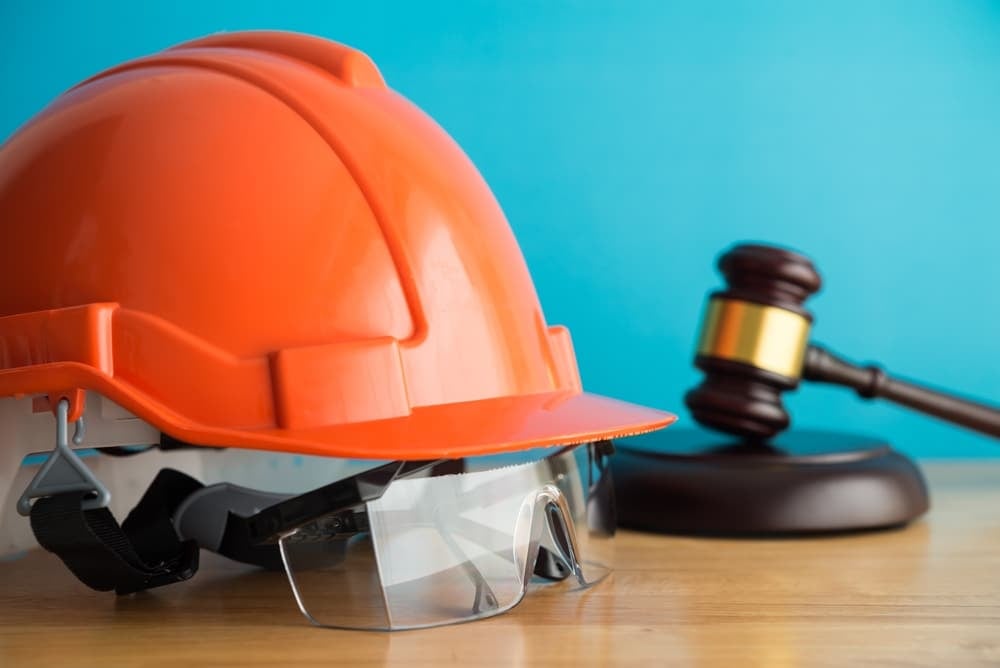Working in the construction industry can be hazardous, especially since unseen toxic substances are likely to be present on job sites. If you’re in construction and experiencing health issues, could they be related to toxic exposure on the sites you frequent? If so, understanding your legal rights from a construction accident lawyer in NYC could be crucial.
Ross & Hill’s construction injury lawyers in NYC have seen how these invisible dangers can cause serious health problems for workers in the area. Below is more about toxic exposure on NYC construction sites and the options available to affected workers.
The Hidden Dangers Lurking on Construction Sites
In 2023, the U.S. Bureau of Labor Statistics reported 1,075 fatal work injuries in private industry construction, ahead of Transportation and Warehousing by over 100 deaths. On top of the physical fall risks and machinery use, construction sites contain numerous hazardous substances that workers may not even realize they’re being exposed to daily. Unlike immediate injuries from falls or equipment, toxic exposure happens over time.
Major amendments to the Clean Air Act between 1990 and 2000 have addressed several street-level exposures to toxic substances, but these efforts are still ongoing. In the meantime, common toxic substances still found on NYC construction sites include:
- Asbestos in older buildings, insulation, and roofing materials
- Lead in paint, pipes, and older building components
- Silica dust, which cutting concrete, stone, or brick releases
- Formaldehyde in plywood, particle board, and foam insulation
- Various solvents in paints, adhesives, and cleaning products
These substances can enter your body through inhalation, skin contact, or ingestion. Long-term exposure can lead to severe health conditions, including respiratory problems, neurological damage, and cancer.
How New York Construction Accident Attorneys Help You Uphold Your Legal Rights When Exposed to Toxic Substances
The hazards of construction are common knowledge, which is why preventative measures like the National Institute for Occupational Safety and Health’s 2007 Design for Construction Safety Initiative are in place. Still, what makes these cases particularly challenging is that symptoms may not appear until years after exposure.
If you’ve suffered health complications due to toxic exposure on a construction site, an NYC construction injury attorney can help you explore your options, such as:
- File workers’ compensation claims. A construction accident lawyer in NYC can help you request medical benefits and wage replacement.
- Pursue third-party lawsuits. Are there responsible parties other than employers?
- Seek compensation. New York labor law provisions protect construction workers.
- Log OSHA complaints. Have safety regulations been violated? Make it official.
Your first avenue would typically be workers’ compensation insurance program benefits, which cover everything from medical treatment to partial wage replacement. Proving that your illness resulted from workplace exposure can be challenging when a condition develops slowly. In some cases, it might be necessary to claim against a property owner, general contractor, or equipment manufacturer.
Has the employer failed to follow the Occupational Safety and Health Administration’s safety regulations? These complex toxic exposure cases need an experienced OSHA violation lawyer in NYC at the helm, so don’t go it alone. It’s important to liaise with New York labor law attorneys for clarity and guidance.
Common Toxic Exposure Injuries and Their Impact
The U.K.’s Health and Safety Executive placed construction as the highest occupational cancer contributor, responsible for over 40% of related deaths and cases. The executive reported that the leading cause of death was asbestos (70%), followed by silica (17%). Paint and diesel exhaust represented around 6% each.
The health effects of toxic exposure can be devastating and life-changing. For example, serious health conditions after construction site toxic exposure may include:
- Respiratory diseases, including asthma, silicosis, and mesothelioma
- Neurological conditions affecting brain function, memory, and motor skills
- Various forms of cancer that develop decades after initial exposure
- Chemical burns
- Persistent skin conditions
- Blood disorders affecting bone marrow and blood cell production
A construction site fall lawyer in Brooklyn or another NYC borough can help demonstrate that your toxic exposure and other construction hazards link to your health condition. For example, according to the U.S. Bureau of Labor Statistics, 31.5 per 10,000 full-time workers in the private construction industry required a day off work due to nonfatal workplace falls, slips, and trips from 2021 to 2022.
Time Limitations for Toxic Exposure Claims
It’s even more complicated when you consider New York law’s time constraints for filing toxic exposure claims. There’s a three-year statute of limitations for personal injury cases, including toxic exposure on construction sites. Luckily, the discovery rule often applies, so the countdown may only begin as you discover (or reasonably should have discovered) a connection between your illness and your workplace exposure.
Consequently, documentation is essential in these cases, including medical records that link your condition to workplace exposure, employment records showing you worked at sites with toxic substances, and witness statements. Chat with a New York construction accident attorney about gathering this critical evidence as quickly as possible.

Taking Action After a Construction Accident via Toxic Exposure
So, you suspect you’ve been exposed to toxic substances at work. What now?
Prompt action could protect your health and legal rights, so consult with a construction accident lawyer in NYC and take these steps:
- Seek immediate medical attention.
- Report the incident to your employer.
- Document symptoms, exposure dates, and workplace conditions.
- Gather witness contact information.
Tell your healthcare provider about your work environment and potential exposures so that they can properly diagnose and document any connections. Unlike a general scaffold accident lawyer in Manhattan or seeking crane accident legal help in NYC, toxic exposure cases require an in-depth understanding of the timelines and complexities. Don’t wait to talk to industry professionals like Ross & Hill about your options.
How Ross & Hill’s Construction Injury Lawyer in NYC Can Help Protect Your Rights
At Ross & Hill, we’ve seen the devastating impact toxic exposure on NYC construction sites has had on the city’s workers and their families. If you’re a construction worker, we can help you navigate the complex legal landscape surrounding workplace injuries and illnesses. No matter the causes of construction accidents, building a strong case could help your claim for medical expenses, lost wages, pain and suffering, and other damages related to toxic exposure so that you can move forward.
Have you or a loved one suffered from toxic exposure while working on a construction job site? Contact Ross & Hill today at (646) 351-6222 for dedicated construction accident lawyers in NYC.
Frequently Asked Questions
Here are answers to some of your common concerns regarding toxic exposure on construction sites.
What Are the Most Common Toxic Substances on NYC Construction Sites?
Some common toxic substances on construction sites in New York include asbestos and formaldehyde in buildings and materials, lead in paint and pipes, and silica dust from cutting into concrete or stone.
How Long Do I Have To File a Claim for Toxic Exposure?
In New York, construction workers generally have three years to file a claim, beginning from when they discovered or reasonably should have discovered that their illness was related to workplace toxic exposure. This “discovery rule” acknowledges that many toxic exposure illnesses take years to develop and diagnose.
What Compensation Can I Receive for a Toxic Exposure Claim?
If you want to lodge a toxic exposure claim, working with a construction accident lawyer in NYC may help your eligibility for compensation to cover medical bills, lost income, reduced earning ability, pain and suffering, and other related damages. It depends on the severity of your illness, your ability to continue work, and the exposure details.


